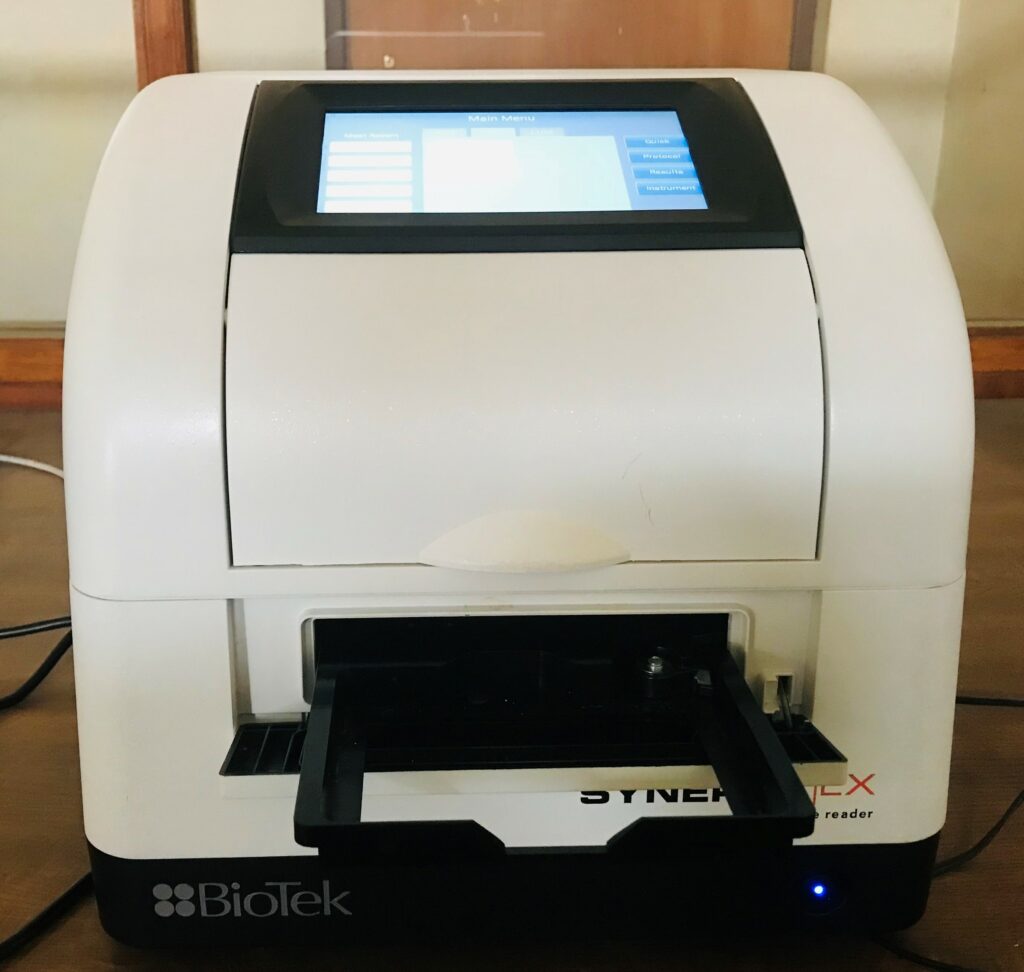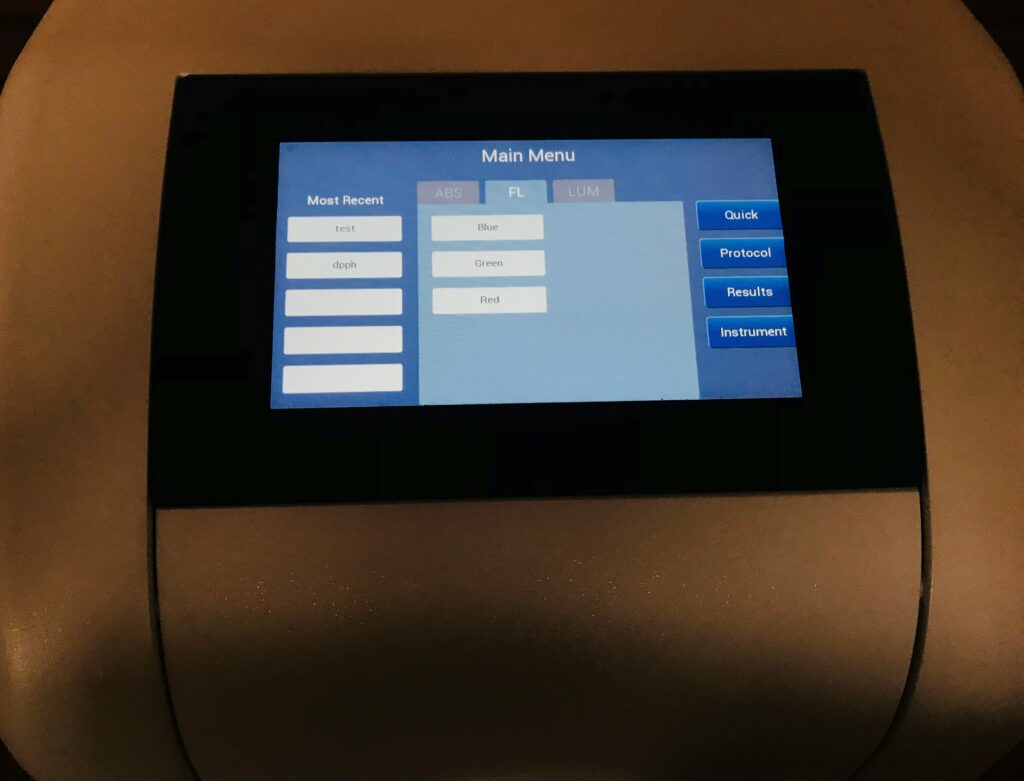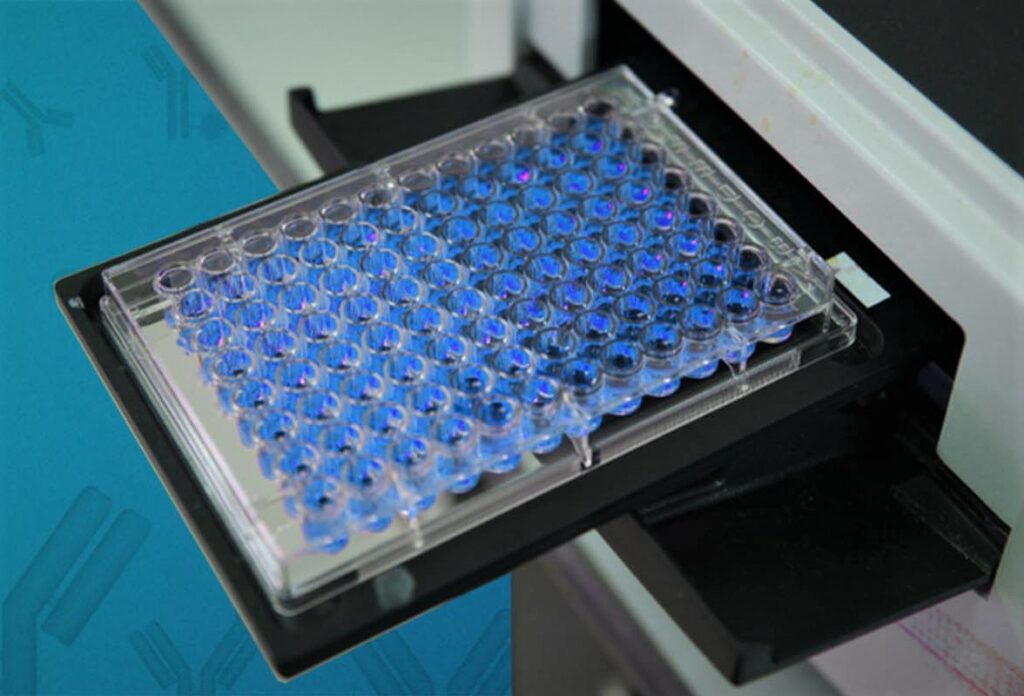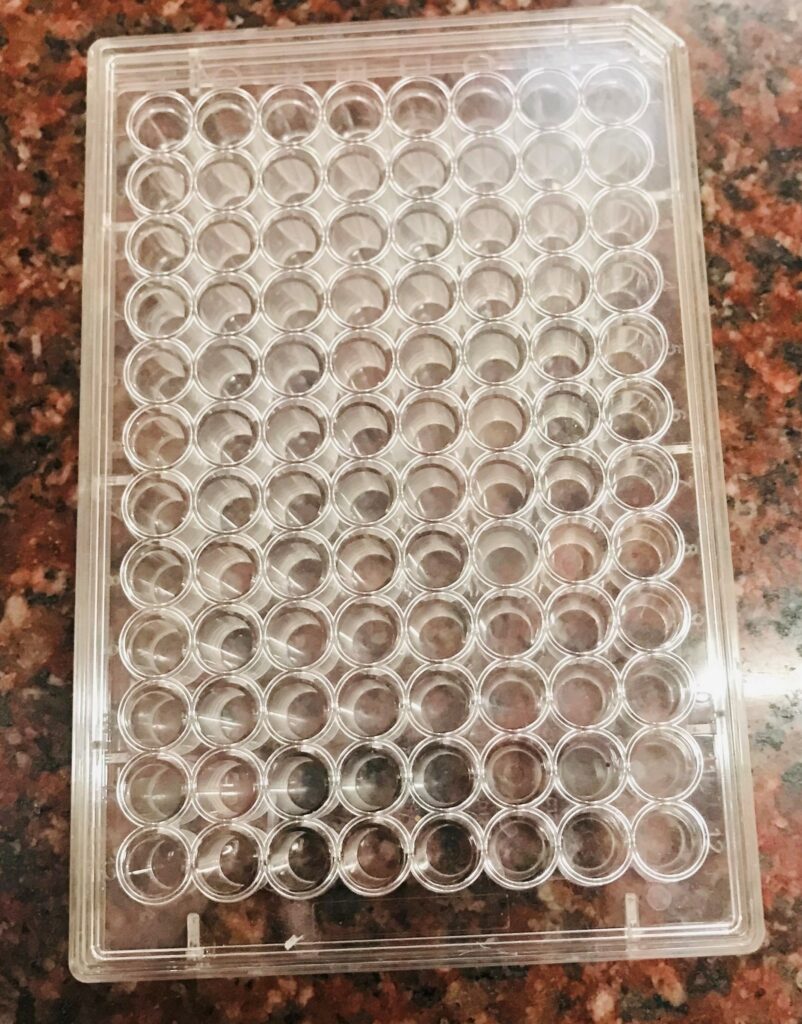Table of Contents
ToggleMicroplate readers also referred to as microplate photometers, are tools used to identify biological, chemical, or physical phenomena occurring in the material on microtiter plates. In the pharmaceutical and biotechnology sector as well as academic institutions, they are extensively employed in research, drug discovery, bioassay validation, quality control, and manufacturing processes.
Microplate reader
Microplate readers are the instruments generally used to perform biochemical assays in lab examples to determine total phenolic content, total flavonoid content, and total tannin content. 96-well (8 by 12 matrix) microplates are the most popular microplate format used in university research labs or clinical diagnostic laboratories. The usual reaction volume for each well is between 100 and 200 L.

Principle of microplate reader
A microplate reader is thought to be referred to as a specialized spectrophotometer. The presence of colorimetric agents in the microplate reader is the only distinction between the two devices—the traditional spectrophotometer and microplate reader. When compared to the multi-plate reader, the conventional spectrophotometer has a wider range of wavelengths. Results can also be interpreted using diffracting gratings on the microplate reader.
This is more significant in the Elisa approaches for the identification of various forms of malignancies. The finest microplate readers have a 400–750 nm wavelength range. However, it is evident that certain microplate readers use UV light for analysis. Between 340 and 700 nm of light is used for the analysis. They use optical fibers to provide light rays to the biological sample-containing plate reader wells. For analysis, these specimens or samples are put in several wells of the microplate reader.
The diameter of the laser beams that pass through the biological samples ranges from 1 to 3 mm. The light rays produced by the sample reactions are detected using an ELISA plate reader detection system. The signal is also amplified, and the absorbance rate of the reaction sample is calculated. The light beams are then converted into data sets by a reading system comprising plate readers for clear and concise interpretation. Also, it enables the accurate sample interpretation of test results.
Assays to be performed
For the microplate reader, some tests must be run. The three functions of absorbance, fluorescence, and luminescence are often the focal points of the most common read modes.
1. Absorbance microplate reader
In this method of microplate detection, a light source that emits light at a certain wavelength illuminates the biological response specimen. Here, a monochromator or an optical filter is used to choose the wavelength. How much of the original light passes through the biological sample is determined by a light ray detector that is situated on the opposite side of the microwell in the plate.
The concentration of the target molecule present inside the wells is often correlated with the amount of light that is transmitted. To properly examine the samples, additional conventional colorimetric analyses have been added to the wells of an ELISA microplate reader. It has also been significantly reduced in size so that it can perform quantitatively in the best microplate reader with performance appropriate for biological research needs.

2. Fluorescence microplate reader
Throughout the past two decades of biological research, fluorescence intensity has been a significant method in microplate reading format. Compared to the microplate absorbance detection method, the fluorescence intensity detection method has a significantly wider variety of applications. However, fluorescence detection equipment is typically more expensive. The fluorescence intensity instrumentation in this kind of microplate reader consists of:
The sample is illuminated by the excitation system using light of a particular wavelength. A monochromator or optical filter typically selects it. There is also the lighting system. The specimen emits light known as fluorescence as the light rays pass through it.
The optical system, which collects the emitted light and separates it from the excitation light, is the microplate reader’s emission system. The monochromator system is used to accomplish this separation. Moreover, a light detector known as a photomultiplier tube is used to measure the signal (PMT).

3. Selection of microplate reader based on the number of wells
1. 6 To 96 Plate Reader
This multimode plate reader has up to 96 wells for reaction sample storage. In this, detection is simple to perform. By examining the side of the well by side, all detections may be read. A microplate reader can be used to take the readings. The microplate reader has exceptional sensitivity and speed.
2. 384 microplate reader
In any case Microplate Reader, the large wells that go with the reaction samples aid in the results’ diversification.
3. 1536 And 3456
In any case Microplate Reader, because there are so many wells on one plate, it is incredibly dense. Very small amounts of the reaction mixture can therefore accommodate it. As a result, reading the data is rather challenging.

Function of Microplate reader
- In yeast physiology research
- In determining the total tannin content, total phenolic content, and total phenolic content.
- ELISA plate reader
- For different biological, phytochemical assay
- For spectrophotometry assay
Biotek microplate reader
Microplate readers with many modes provide versatility and user-friendliness for a variety of applications. In order to maximize laboratory budgets, BioTek’s multi-mode readers must be highly configurable. Readers from Synergy and Cytation offer modular features and exceptional performance and cost requirements.
The absorbance readers from BioTek offer complete versatility for a variety of applications. The absorbance readers provide a wide range of capabilities, from straightforward ELISA to high throughput detection. UV-VIS detection is provided by monochromator-based equipment, whereas excellent performance and affordability are provided by filter-based systems.
Microplate reader vs spectrophotometer
With a few significant exceptions, a microplate reader is essentially a spectrophotometer. Similar to a microtiter plate reader, a spectrophotometer uses a monochromator or filter-based optics to measure activities in samples, but it only uses one small sample size.









